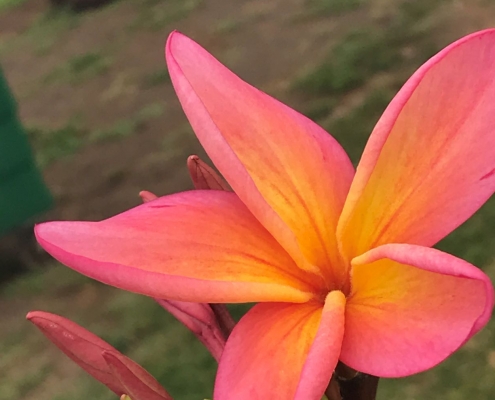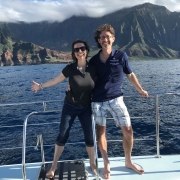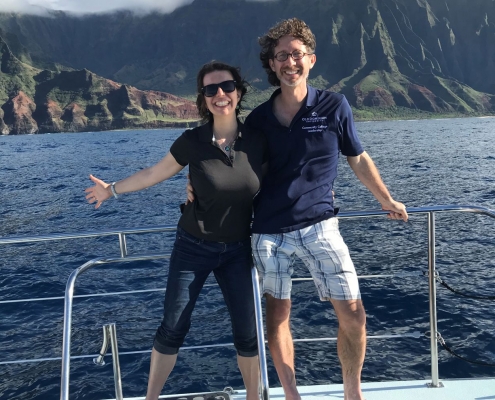Monday, March 16, 2020
Friends,
Although the obvious topic has consumed our attention since we got back, we wanted to send some final words about our recent adventures.
First of all, we felt as if we nearly witnesses the life cycle of earth: during our run in Volcanoes National Park, we saw lava flows that had added nearly 700 acres to the Big Island as recently as 2018. During our hikes on the Kilalau trail and in Waimea Canyon, we witnessed incredible beauty as a result of millennia of erosion, which was literally happening beneath our feet as we kicked rocks down the sides of cliffs.
We were surprised by how authentic Hawaii was. The resources of the Hawaiian islands have been plundered over the last 200 years, but the essential, incomparable nearness of etched stone, black sand beaches and white-tipped waves remain in unspoiled contrast – this despite the fact that Hawaii, with only 1.4 million residents, attracts nearly 10 million tourists annually. The word that kept coming to our minds to describe it all was “lush”; large, brilliantly colored, richly textured, blindingly beautiful, moist like a melting kiss.
While we were on the islands we were treated with the utmost kindness and hospitality, with everyone interacting with us in fish markets or gift shops willing to explain what we were seeing and help us learn about the culture and regional cuisine. However, venturing off the beaten path as we did in the Waipio Valley on the Big Island, or as I did on my run near Waimea on Kauai, we saw plenty of “no trespassing” signs (quite understandably). Despite the friendly outward facing approach of the islanders we interacted with, I got the sense that there was another side to the relationship between islanders and visitors. This is not simply a tension between tourism and the everyday lives of Hawaiians, but also between the use of the island for modern pursuits such as astronomy and the sense of the sacred that native Hawaiians have had regarding the volcanoes and other natural areas. A small piece of that tension is discussed in this article about native Hawaiians’ views regarding the introduction of yet another telescope on the summit of Mauna Kea on the Big Island. We saw the Union Jack flags, white tents where clearly many people had been camped out, and a “free Hawaii” sign at the base of Mauna Kea when we drove down the mountain, but only later realized the context of what we had witnessed.
Although native Hawaiian culture pervades the tourist attractions on the islands, we were surprised to find very little information in our guide books about the process that Hawaii underwent to become a state. One guide book mentioned that “most native Hawaiians voted for statehood” and left it at that. Digging a little deeper, one finds concerns that native Hawaiian culture is treated too much as a matter of history (for example, the petroglyphs we saw in Volcanoes National Park) and not enough as a matter of current concern. Approximately 9% of the population on the islands identifies as native, while a much larger percentage of inhabitants are of native descent while also having Asian heritage – this may not seem like a large number, but it’s huge when you consider the tiny percentage of native Americans on the mainland. We’d still like to learn more about the history of Hawaii from a native perspective.
Speaking of history, the future of Hawaii is still uncertain. Travel southeast of the Big Island, nee’ Hawaii Island, and you’ll find thousands of miles of landlessness. But less than a league away the newest island is being created. Already named Loihi (meaning “long” in Hawaiian), it is estimated to breach the watery surface in 30,000 years, give or take a few. Will there still be human civilization? Perhaps we tourists will have consumed the beauty that nature created over the last four million years. But, just maybe, the best part of us will beat back commerce’s maw, reverse climate change’s effects, and be there to greet the newest isle in the Pacific’s coral necklace.
We hope you’ve enjoyed our letters home as much as we’ve enjoyed writing them.
Mahalo (thank you),
E&D






